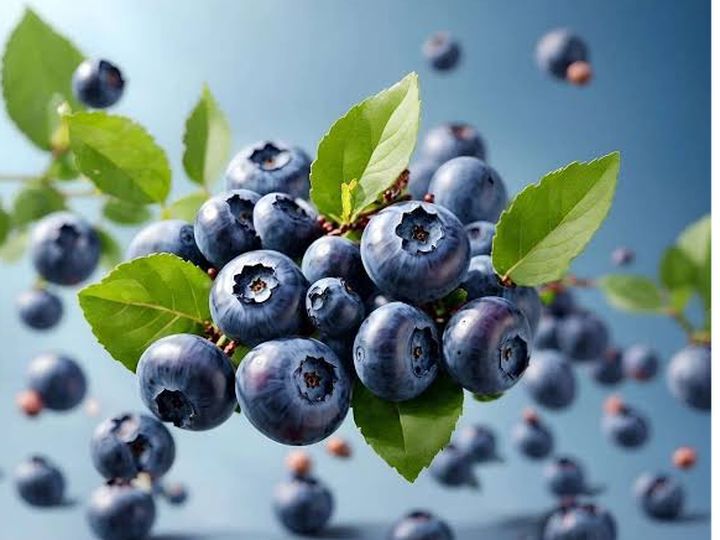
JAKARTA, inca.ac.id – Blueberries have emerged as a staple in diets around the world, celebrated not only for their delightful flavor but also for their impressive health benefits. Often labeled as a “superfruit,” blueberries are rich in antioxidants, vitamins, and minerals that contribute to overall health. With the increasing demand for fresh blueberries, understanding the science behind blueberry cultivation is essential for anyone interested in farming these berries. This article will delve into the nuances of blueberry cultivation, exploring everything from soil requirements to pest management, while emphasizing the importance of knowledge in successful farming practices.
The Rise of Blueberries
The popularity of blueberries has surged in recent years, driven by a growing awareness of their health benefits. Research consistently highlights their high antioxidant content, which plays a crucial role in combating oxidative stress and reducing inflammation. Blueberries are known to support heart health, improve cognitive function, and even aid in weight management. As consumers become more health-conscious, the demand for fresh blueberries continues to rise, making blueberry cultivation an attractive option for farmers.
Understanding Blueberry Varieties
One of the first steps in successful blueberry cultivation is selecting the right variety. There are several types of blueberries, each with distinct characteristics suited to different climates and soil conditions. The primary varieties include:
- Highbush Blueberries: These are the most commonly cultivated blueberries, thriving in a range of climates. Highbush blueberries can grow up to six feet tall and produce large, sweet berries. They are ideal for commercial production due to their high yield potential.
- Lowbush Blueberries: Typically found in the wild, lowbush blueberries are shorter and produce smaller berries. They are often harvested for processed products like jams and jellies. These varieties are more resilient to cold temperatures and are often grown in North America’s northern regions.
- Rabbiteye Blueberries: Native to the southeastern United States, rabbiteye blueberries are more drought-resistant and can tolerate warmer climates. They are known for their adaptability and can produce fruit even in less-than-ideal conditions.
- Southern Highbush Blueberries: A hybrid that combines traits from highbush and rabbiteye varieties, southern highbush blueberries are suited for warmer regions and have an early harvest season. They are increasingly popular among growers in the southern U.S.
Understanding the specific requirements and characteristics of each variety is crucial for successful blueberry cultivation. Knowledge about local climate conditions, soil types, and market demand will help farmers choose the most suitable variety for their operations.
Soil Requirements
Blueberries thrive in acidic soils with a pH between 4.5 and 5.5. Conducting a soil test before planting is essential to determine the pH level and nutrient content. Here are some important considerations for preparing the soil:
- Soil Amendments: If the soil is not acidic enough, amendments such as elemental sulfur or organic matter like pine needles or peat moss can be added to lower the pH. Knowledge of soil chemistry is vital here; applying too much sulfur can lead to overly acidic conditions, which can harm the plants.
- Drainage: Blueberries prefer well-drained soils. If the soil retains too much water, consider using raised beds or mounds to improve drainage. Poor drainage can lead to root rot and other diseases, which can devastate a blueberry crop.
- Organic Matter: Adding organic matter to the soil can really improve its structure and boost nutrients, which helps roots grow better. It also holds moisture and supplies key nutrients, making the soil just right for blueberry plants.
Planting and Spacing
The timing of planting is critical for successful blueberry cultivation. The best times to plant blueberries are early spring or fall when temperatures are cooler. Here are some guidelines for planting:
- Spacing: For highbush blueberries, space the plants about 4 to 5 feet apart to allow for proper air circulation and growth. Lowbush varieties can be planted closer together, around 2 to 3 feet apart. Knowledge of plant growth habits will help you determine the best spacing for your specific variety.
- Planting Depth: Ensure that the root ball is level with the soil surface when planting. Avoid burying the crown of the plant, as this can lead to rot. Proper planting techniques are crucial for establishing a healthy root system.
- Watering: After planting, water the bushes thoroughly to help establish roots. Consistent moisture is vital during the first growing season. Knowledge of irrigation practices is important; overwatering can lead to root rot, while underwatering can stress the plants.
Pollination and Cross-Pollination
While blueberries are self-pollinating, cross-pollination between different varieties can enhance fruit size and yield. Planting multiple varieties can lead to better pollination and a more abundant harvest. Bees play a crucial role in pollination, so maintaining a healthy bee population in your area can significantly benefit your blueberry crop.
Knowledge of pollination practices is essential for maximizing yields. Consider introducing beehives to your farm or planting flowers nearby to attract pollinators. Understanding the timing of flowering and the activity of pollinators can help ensure successful fruit set.
Nutrient Management
Proper nutrition is vital for the health of blueberry plants. Here are some strategies for effective nutrient management:
- Fertilization: Use fertilizers formulated for acid-loving plants. Apply fertilizer in early spring and again in late spring, following the recommended rates based on soil tests. Knowledge of nutrient requirements for blueberries will help you tailor your fertilization program to meet the specific needs of your plants.
- Mulching: Applying organic mulch, such as pine bark or wood chips, can help retain soil moisture, suppress weeds, and gradually improve soil acidity as it decomposes. Mulching also provides a habitat for beneficial microorganisms that can enhance soil health.
Watering Practices
Blueberries have shallow root systems and require consistent moisture, especially during fruit development. Here are some watering tips:
- Irrigation: Drip irrigation is ideal for blueberries, as it delivers water directly to the roots and minimizes evaporation. This method allows for precise control over water application, reducing the risk of overwatering.
- Moisture Monitoring: Regularly check soil moisture levels. The soil should be kept consistently moist but not waterlogged. Knowledge of soil moisture monitoring techniques can help you determine when to water and how much to apply.
Pest and Disease Management
Like any crop, blueberries are susceptible to pests and diseases. Monitoring your plants regularly can help you catch problems early. Common issues include:
- Pests: Blueberry maggots, aphids, and spider mites can affect your crop. Implementing integrated pest management (IPM) strategies, such as introducing beneficial insects and using organic pesticides, can help control these pests effectively. Knowledge of pest life cycles and behaviors is essential for effective management.
- Diseases: Fungal diseases like powdery mildew and root rot can be problematic. Ensure proper air circulation and avoid overhead watering to reduce humidity around the plants. Knowledge of disease identification and prevention strategies can help you maintain a healthy blueberry crop.
Harvesting Blueberries
Blueberries typically ripen in late spring to early summer, depending on the variety and climate. Here are some tips for harvesting:
- Timing: Harvest when the berries are fully ripe, which means they should be deep blue and easily detach from the stem. Picking too early can result in sour-tasting berries, while waiting too long can lead to overripening and spoilage.
- Techniques: Gently roll the berries off the stem to avoid damaging the plant. Consider using a picking rake for larger operations to speed up the process. Knowledge of proper harvesting techniques can minimize damage to the plants and maximize yield.
Post-Harvest Handling
After harvesting, it’s crucial to handle blueberries properly to maintain their quality:
- Cooling: Cool the berries immediately after harvest to extend shelf life. Ideally, they should be stored at temperatures between 32°F and 34°F. Knowledge of post-harvest handling practices is essential for preserving fruit quality.
- Packaging: Use breathable containers to prevent moisture buildup, which can lead to mold. Proper packaging can help extend the shelf life of your blueberries and maintain their marketability.
The Importance of Knowledge in Blueberry Cultivation
Throughout the process of blueberry cultivation, knowledge plays a pivotal role. From understanding soil requirements and selecting the right varieties to managing pests and diseases, having a solid foundation of knowledge is essential for success. Here are some ways to enhance your knowledge in blueberry farming:
- Education and Training: Attend workshops, seminars, and courses focused on blueberry cultivation. Many universities and agricultural extension services offer resources and training programs for aspiring blueberry farmers.
- Networking: Connect with other blueberry growers and industry professionals. Joining local farming associations or online forums can provide valuable insights and support.
- Research: Stay informed about the latest research and advancements in blueberry cultivation. Reading scientific journals, articles, and publications can help you keep up with best practices and emerging trends.
- Experimentation: Don’t be afraid to experiment with different techniques and practices on a small scale. Keeping detailed records of your observations can help you learn what works best for your specific conditions.
Conclusion
Blueberry cultivation is an exciting and rewarding venture that combines science, agriculture, and a bit of artistry. By understanding the key factors involved in growing these superfruits—from soil preparation and planting to pest management and harvesting—you can set yourself up for a successful blueberry farming experience.
As consumers continue to seek out healthy, fresh produce, the demand for blueberries is likely to remain strong. By investing time in expanding your knowledge and applying best practices in blueberry cultivation, you can not only meet this demand but also enjoy the fruits of your labor—literally! So, roll up your sleeves, embrace the science of blueberry farming, and get ready to cultivate this delicious and nutritious superfruit. Happy farming!
Read also about Medical Education to explore how future healthcare professionals are trained through rigorous academics, clinical experience, and evolving technologies in the medical field.







